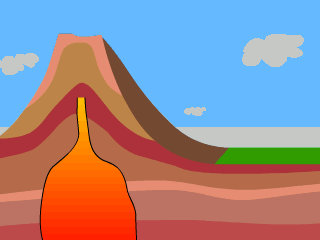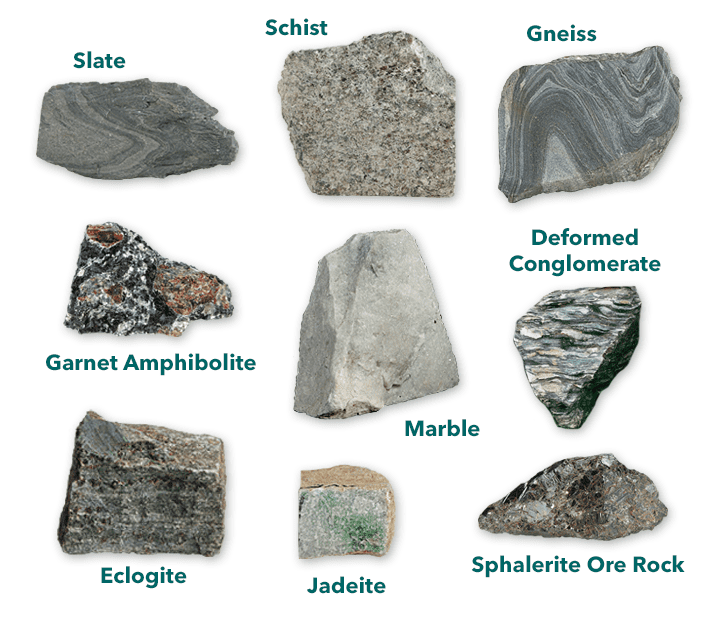THE ROCK CYCLE

Rocks are naturally occurring minerals. Minerals are solid elements that have a definite chemical makeup. The atoms of rocks are very close together and regularly arranged which gives rocks their rigidness. Much of the earth’s crust and mantle is made up of rocks.
TYPES OF ROCKS
What Exactly Are Sedimentary Rocks?
Sedimentary rocks are formed by sediment accumulation. Sedimentary rocks are classified into three types.
Clastic sedimentary rocks form as a result of mechanical weathering debris accumulation and lithification. Breccia, conglomerate, sandstone, siltstone, and shale are some examples.
When dissolved materials precipitate from the solution, chemical sedimentary rocks form. Flint, iron ore, limestones, and rock salt are a few examples.
Organic sedimentary rocks form when plant or animal debris accumulates. Chalk, coal, diatomite, some dolomites, and some limestones are examples.
Sedimentary rocks are the most common on the Earth’s surface, but they make up only a minor portion of the crust, which is dominated by igneous and metamorphic rocks.
Weathering of preexisting rocks, followed by transportation and deposition of the weathering products, produces sedimentary rocks.
Weathering refers to the various physical disintegration and chemical decomposition processes that occur when rocks at the Earth’s surface are exposed to the atmosphere (most notably in the form of rainfall) and the hydrosphere.
Soil, unconsolidated rock detritus, and components dissolved in groundwater and runoff are all produced by these processes. The process by which weathering products are transported away from the weathering site, either as solid material or as dissolved components, and eventually deposited as sediment, is known as erosion.
Sediment is any unconsolidated deposit of solid weathered material. It can form as a result of grain deposition from moving bodies of water or wind, glacial ice melting, and downslope slumping (sliding) of rock and soil masses in response to gravity, as well as precipitation of the dissolved products of weathering at or near the Earth’s surface under conditions of low temperature and pressure.
The lithified equivalents of sediments are sedimentary rocks. They are typically made by cementing, compacting, or otherwise solidifying previously unconsolidated sediments.
Some sedimentary rocks, on the other hand, are precipitated directly into their solid sedimentary form, with no intervening existence as sediment.
Clastic terrigenous sedimentary rocks are made up of varying sizes of rock and mineral grains, ranging from clay, silt, and sand to pebble, cobble, and boulder-size materials.
Gravity, mudflows, running water, glaciers, and wind transport these clasts and deposit them in various locations (e.g., in desert dunes, on alluvial fans, across continental shelves, and in river deltas).
Terrigenous clastic sedimentary rocks are further subdivided based on average clast diameter because transportation agents commonly sort out discrete particles by clast size.
Conglomerate and breccia are formed when coarse pebbles, cobbles, and boulder-size gravels lithify; sand becomes sandstone; and silt and clay form siltstone, claystone, mudrock, and shale.
IGNEOUS ROCKS
Igneous rocks are rocks that are formed from molten or partly molten material known as magma. Magma is a common feature of volcanoes. It forms deep underground where rocks are melted.

When magma reaches the earth’s surface it cools and hardens. When it erupts from volcanoes magma is called lava. Magma that becomes solid inside the earth cools at a slower rate and allows it to form crystals.
Igneous rocks usually contain minerals such as quartz, feldspar, pyroxene, and mica. Commonly known igneous rocks are granite and basalt. Granite has large crystals of quartz and feldspar. Basalt is the most common rock from volcanoes.
METAMORPHIC ROCK
Metamorphic means to undergo a change. As the name suggests metamorphic rocks are rocks that go through a structural change because of high temperatures and pressure.
The change can take place without it actually melting. This is because some minerals will break down into different types of minerals when subjected to high temperatures and compression. The process by which rocks change in mineral composition is called metamorphism.







